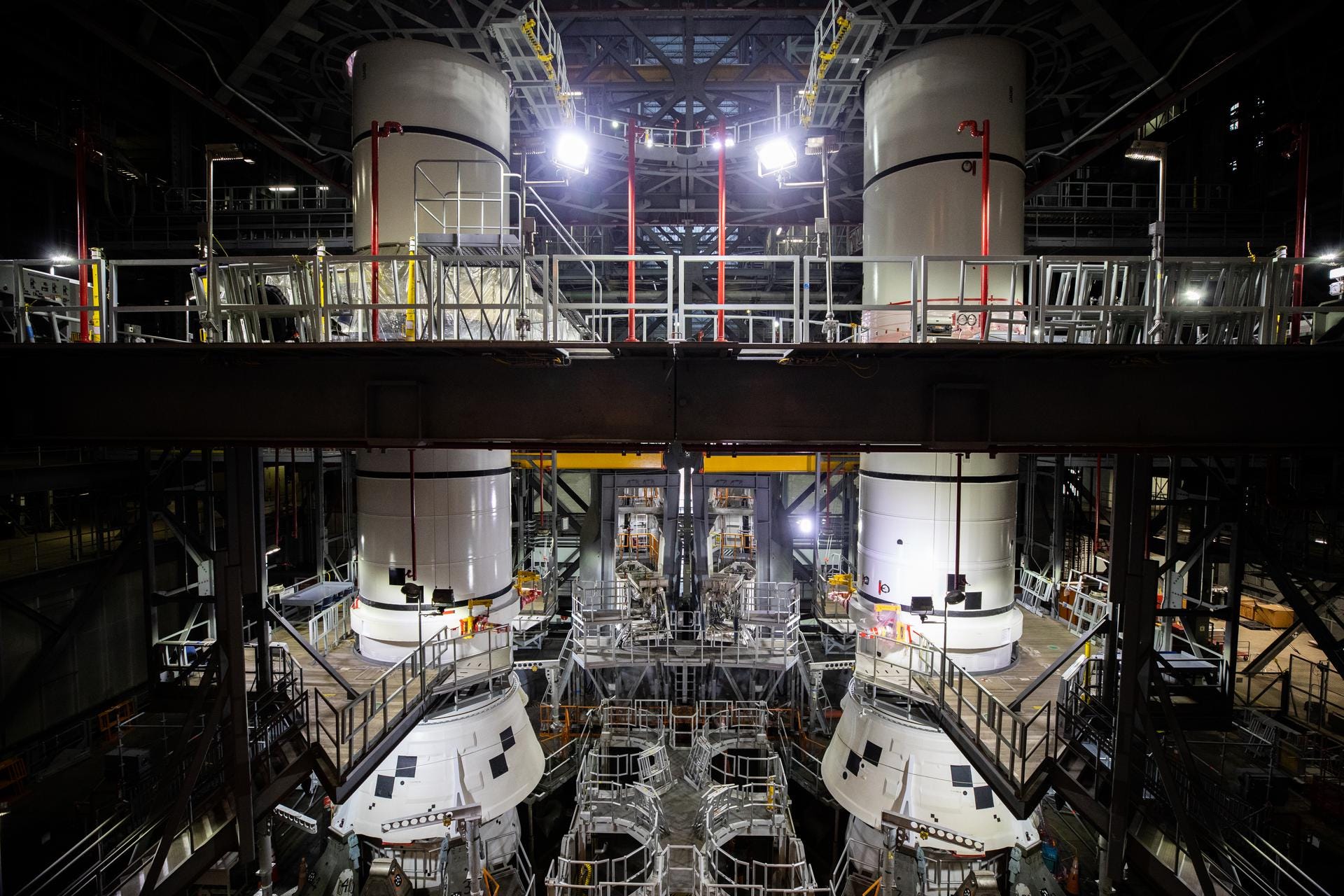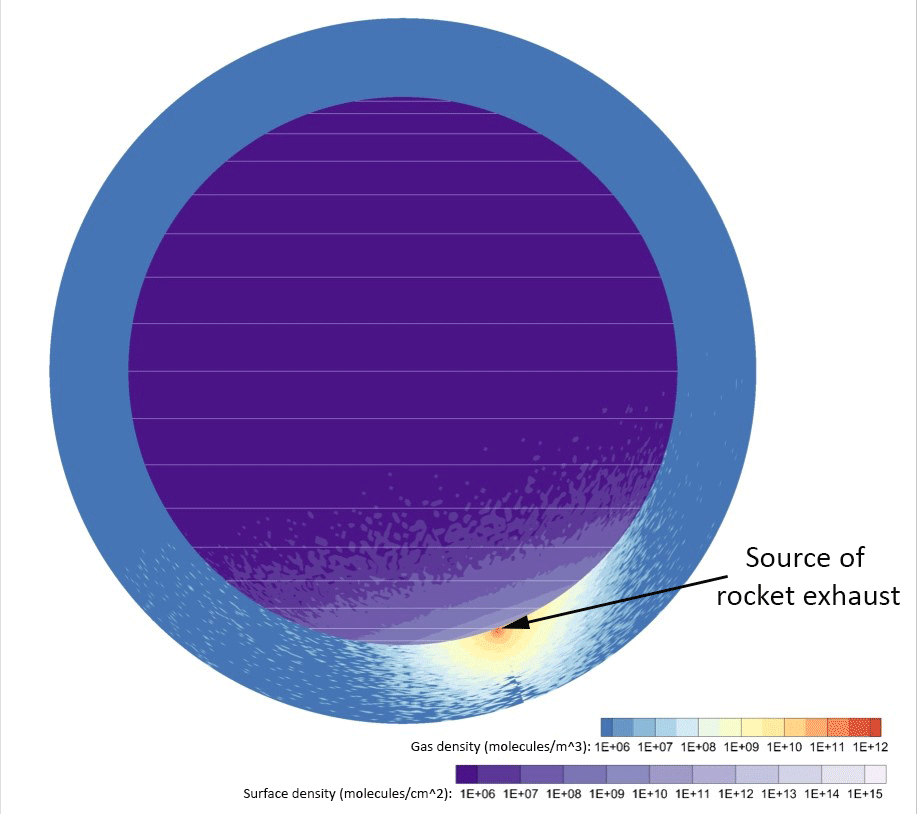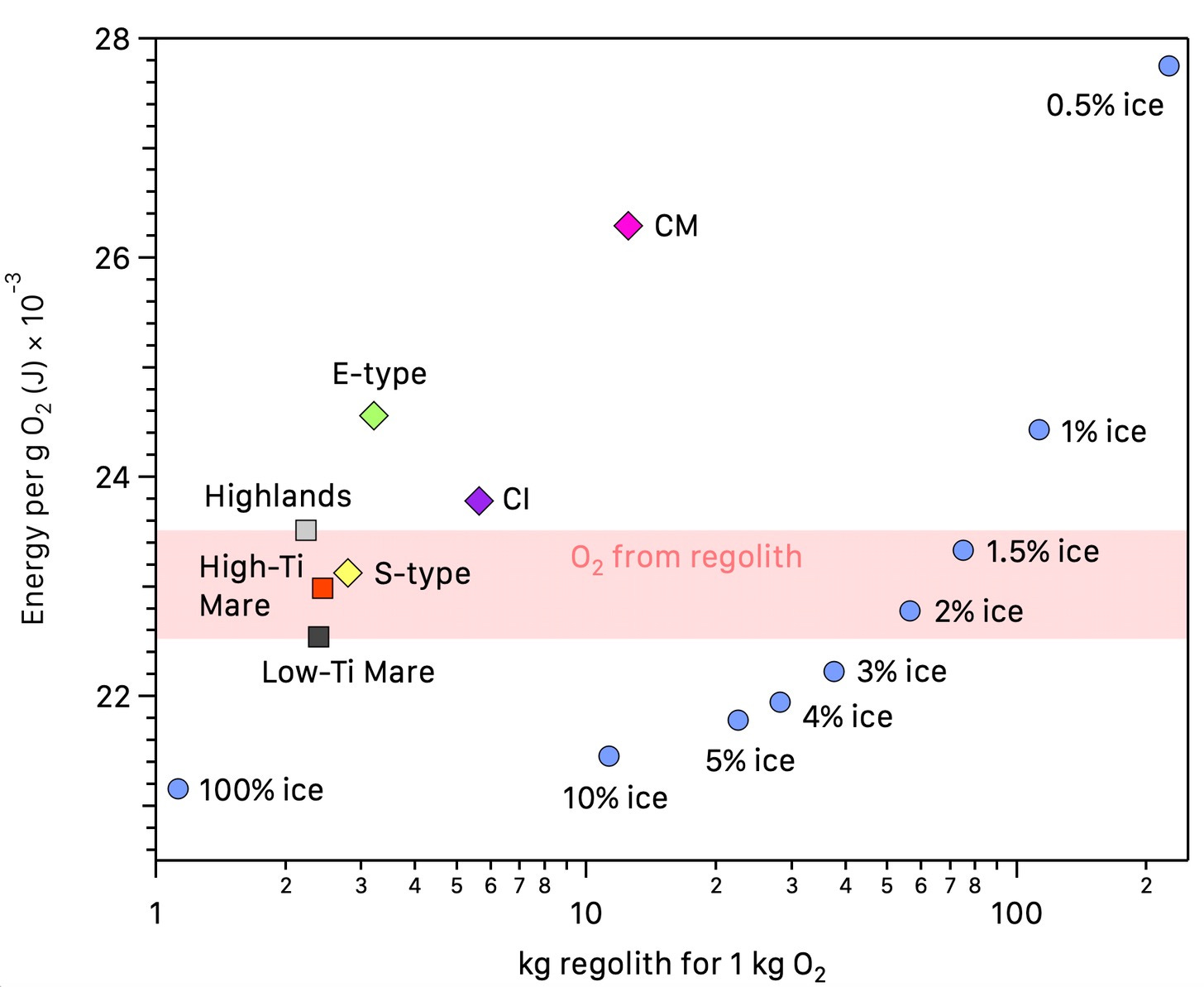Moon Monday Issue #12
NASA to redo SLS hot fire test, Intuitive Machines readies NASA instruments for their first Moon landing, Earth maybe a source of surface Moon water, and more developments in the lunar space.
Highlight
NASA will redo the SLS rocket hot fire test in the fourth week of February, following an abrupt shutdown of the engines about one minute into the original test. The repeat test duration would be the same as intended before (8 minutes), and the team says that at least 250 seconds of hot firing would be required to give the rocket a green signal for flight. The team is updating the conservative test parameters that shut down the engines the last time, and have solved other unrelated issues that cropped up alongside. Interestingly, NASA is still sticking to a 2021 launch date for Artemis I that keen observers of the program consider unlikely.

Meanwhile, NASA is slowly stacking segments of the SLS rocket booster for Artemis I, having placed 4 out of 10 segments on the mobile rocket launcher so far. Here’s a chart of the process.
Exploration
NASA continues work on identifying landing sites for Artemis human missions on the Moon’s south pole that are near constantly sunlit while having easy access to permanently shadowed regions. To setup their long-term Moonbase, the team is searching for sufficiently elevated locations at least one kilometer away from the landing areas so as to protect the base from huge amounts of high-speed debris that visiting spacecraft will kick off while landing. Contamination from spacecraft is also why astronauts will have to venture far away from the landing and base sites to obtain fairly pure surface samples.

Although Roscosmos originally agreed to join the Gateway lunar station project with NASA in 2017, they’re now backing away. Dmitry Rogozin, the head of Roscosmos, expressed concerns that the Gateway is too “US centric” and doesn't put Russia on equal footing. He reiterated that the Russian space agency is interested only if the program is run more like the International Space Station, with the US and Russia maintaining dual control over the station and mission controls existing in both Houston and Moscow.
Intuitive Machines has successfully completed initial testing of four NASA payloads onboard their first Moon landing mission. The test was to demonstrate bi-directional communications between the instruments and lander’s flight computer, and between the computer and ground systems of both Intuitive Machines and NASA. Next, the payloads will be assembled on Intuitive Machine’s lander in preparation for a late 2021 flight on a SpaceX Falcon 9.
As part of its 2021 BIG Ideas challenge, NASA has awarded a total of about $1 million to seven university teams to develop technologies over the next 10 months that mitigate hazardous effects of Moon dust. The teams’ proposals vary from active dust mitigation capabilities like air filtration systems to passive concepts like dust-free landing pads. Related: Masten’s plan to equip a lunar spacecraft engine with a giant injector nozzle to coat the lunar surface in particles that sinter into a solid pad on contact.
A consortium of Australian companies led by small-satellite developer Fleet Space Technologies is preparing for a series of Moon missions to be onboard NASA’s Artemis flights. The consortium plans to send nano-satellites to the Moon onboard Artemis II in 2023 to search for abundant, accessible water. Their second mission in a later Artemis flight will deploy a constellation of larger satellites in lunar orbit.
An interesting article from Kevin Cannon making the case for why it maybe easier overall to extract oxygen from lunar regolith than from water ice on the surface of lunar poles. The lunar poles start adding resource value in this context only if water ice is extracted from over a meter below the surface.

Science
NASA's Human Research Program is funding eight proposals cumulatively worth $4.8 million to help answer questions about astronaut health and performance in future missions to the Moon and beyond. The selected proposals will investigate biological, physiological, and behavioral adaptations to long-term deep space flights. A notable inclusion in the proposals is the use of virtual reality environments to train astronauts.
Scientists think that energetic protons from the solar wind smashing the Moon’s surface produce water and hydroxyl groups. The Moon is partially shielded from the solar wind every time it passes through Earth’s magnetic tail in its orbit. While analyzing infrared data from Chandrayaan-1, scientists expected to see a drop in water/hydroxyl abundance during such times but didn’t. It seems like particles in Earth’s magnetotail maybe a source of surface Moon water and hydroxyl groups too.
Related: NASA’s Casey Honniball who led the SOFIA telescope observations that discovered water in sunlit regions on the Moon recently gave a nice talk on details of the discovery.
More Moon
A look at a structural model of Astrobotic’s Peregrine lander. It was used to test the lander’s mechanical and structural properties for Astrobotic’s first landing mission.
Put on your Red/Blue glasses and watch the Moon in 3D. I used data from NASA's Lunar Reconnaissance Orbiter to make this video. It’s easier to appreciate the beauty of the Moon’s variety of landforms when there’s some literal depth to them. :)
Thank you Jason Davis for supporting me on Patreon and powering this edition of Moon Monday.
Everyone, I’m publishing this one-of-a-kind Moon exploration newsletter for free, with no ads. And it will stay that way. If you like my work, support me to keep me going. Monthly supporters will get their names credited in future Moon Monday issues with a link to their website/social.
